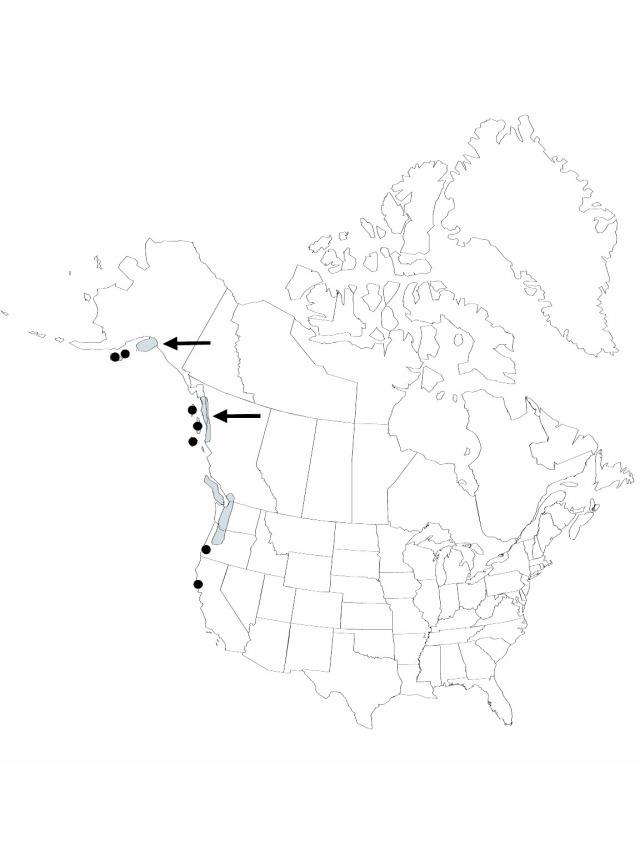Juncus supiniformis
2:461. 1868.
Herbs, perennial, cespitose or matted, often decumbent, rooting at proximal nodes or floating, 0.3–5 dm. Culms erect, decumbent and rooting at nodes, or floating, terete, 1–2 mm diam., smooth. Cataphylls 0 or 1–2, straw-colored, apex acute. Leaves: basal 1–3, cauline 1–4; auricles 0.8–2.1 mm, apex rounded to acute, membranaceous; blade terete, 3.7–15 cm × 0.4–1.3 mm, occasionally with filiform, flaccid, and floating leaves to 60 cm. Inflorescences terminal racemes of 2–9 heads, 2–10 cm, branches erect; primary bract erect; heads 2–12-flowered, obconic or rarely hemispheric, 4–13 mm diam. Flowers: tepals light-brown or greenish to reddish-brown, linear to narrowly lanceolate, apex acute to acuminate-subulate; outer tepals (2.1–) 2.8–4.9 mm; inner tepals (2.1–) 2.8–5.5 mm; stamens 3 or 6, anthers 1/2–3/4 filament length. Capsules usually exserted, dark-brown, 1-locular, ovoid to oblong, (3.2–) 3.5–6.1 mm, apex acute to acuminate proximal to beak, valves separating at dehiscence. Seeds narrowly obovoid to obovoid, 0.6–0.7 mm, not tailed; body clear yellowbrown.. n = ca. 30, ca. 50–60, 2n = ca. 112.
Phenology: Fruiting mid summer–fall.
Habitat: Pond, lake and river shores, marshes, bogs, and ditches
Elevation: 0–1000 m
Distribution

B.C., Alaska, Calif., Oreg., Wash.
Discussion
The northern California and southern Oregon populations (Juncus supiniformis in the strict sense) form long filiform leaves before flowering, are shorter, and have smaller flowers than the northern populations. Except for the filiform leaves, the variation in sizes appears to follow a rough latitudinal cline with the largest plants and largest flowers in Alaska.
Flowers of Juncus supiniformis often form bulbils.
Selected References
None.